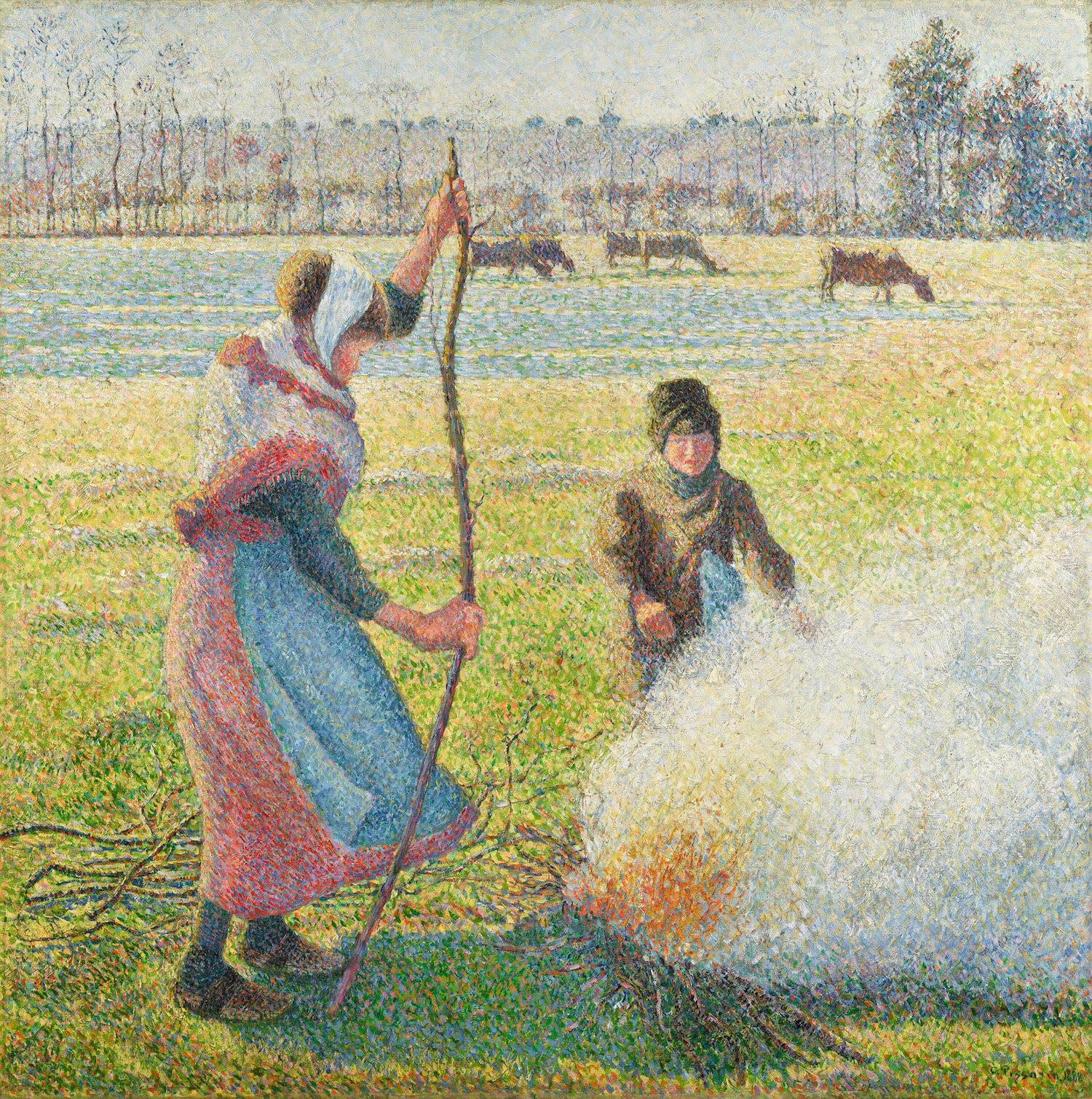
Three Impressionist paintings stolen by the Nazis are heading to auction, having been consigned by the heirs of a prominent French-Jewish collector. Two of the works hung in the Musée d’Orsay in Paris until reclaimed from France by the heirs of Gaston Prosper Lévy. The third emerged in Cornelius Gurlitt’s Munich hoard.
The pointillist works by the French artists Camille Pissarro and Paul Signac were looted by the Nazis after Lévy fled Paris for North Africa to avoid persecution in World War II. Lévy’s heirs recovered two of the works from the Paris museum in 2018, and a third was returned by Germany last year. The canvases could fetch up to $25 million when they go on sale at Sotheby’s London next month.
Pissarro’s Gelée blanche, jeune paysanne faisant du feu (White frost, young peasant girl making fire) from 1888 is set to lead the sale, which is due to take place on February 4. The painting is said to be among the French artist’s greatest pointillist work. He took six months finish the canvas, according to the artist’s letters. The tour de force is expected to sell for up to £12 million ($15 million).
Thomas Boyd-Bowman, the head of Impressionist & Modern Art Evening Sales at Sotheby’s London, said in a statement that the works are testament to two great artists’ “persistent and ultimately triumphant attempts to break new boundaries in art—with every inch on their canvases a highly finished kaleidoscope of perfectly chosen colour.”
Quai de Clichy. Temps Gris, by Paul Signac. Photograph: Sotheby’s.
Signac’s 1887 painting Quai de Clichy. Temps Gris, which resurfaced in the Gurlitt hoard, is estimated to sell for up to £800,000 ($1 million). It was stolen from Lévy’s country home outside of Paris where he had sent them for safekeeping. It ended up in the German art dealer Hildebrand Gurlitt’s infamous collection somewhere between 1943 and 1947. He bequeathed it to his reclusive son, who hid it in along with many other works in his Munich apartment. Cornelius Gurlitt’s hoard of more 1,500 works was discovered in 2012. The Signac work was the seventh painting in the hoard identified by researchers as Nazi loot. It was returned to Lévy’s heirs by German authorities last July.
Signac’s La Corne d’Or. Matin (1907) depicts sailing ships anchored off Constantinople, now Istanbul, with the dome and minarets of Hagia Sophia glistening in the background. It has an upper estimate of £7 million ($9 million).
Paul Signac’s La Corne d’Or. Photograph courtesy of Sotheby’s.
Lévy was a prominent property developed and art collector in Paris in the 1920s and 1930s. He survived World War II by fleeing to Tunisia. While a refugee in North Africa, his prestigious art collection was seized by the Nazis. He died in 1977.
Boyd-Bowman told the Guardian: “It’s a pity for the Musée d’Orsay to lose these paintings, but it’s a good example of a country acting in an honorable fashion. It’s the right thing to do.” He added: “Looting and vandalism should not profit others.”
Sotheby’s global head of restitution, Lucian Simmons, said that it is “honoured to have been chosen by Gaston [Prosper] Lévy’s heirs to offer these important paintings, and to tell the story of the collector and his heritage.”